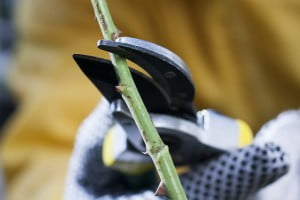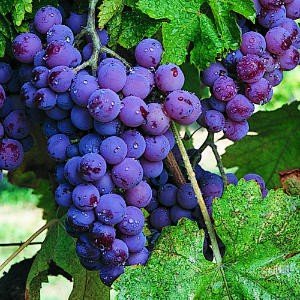 With the beautiful spring weather, I have just completed my first hour back in the garden since abandoning it (more or less) over the winter. I devoted my time to pruning and offer some reflections here on the process.
With the beautiful spring weather, I have just completed my first hour back in the garden since abandoning it (more or less) over the winter. I devoted my time to pruning and offer some reflections here on the process.
Pruning needs confidence. You only prune things that you think are going to continue to flower and fruit from one year to the next. Pruning is not something you do to annuals; in that sense, pruning is a sign of confidence in the future and hope for further fruitfulness. We have inherited some very old roses in our garden; the ones that are doing best, and look good, are the ones that have been pruned back consistently over many years to form a beautiful and mature shape.
Pruning takes courage. When I first started gardening and trying to understand pruning, it felt like a very odd thing to do. The act of cutting back not only dead wood but living growth felt rather brutal and counter-productive. In fact, I have come to realise that it is something that feels much more like a spring clean, and I now love the excitement of thinking what will grow in place of the branches I am now cutting out.
Pruning is essential. I was once pruning some plants back, and one of the children asked me why I was cutting back what looked to her like perfectly good growth. ‘This is last year’s growth, and it did well then. But it has had its time; I need to cut it back to give the new growth a chance to flourish.’
Pruning needs careful timing. Pruning is often considered to be an activity for the Autumn, once growth has stopped and things have become dormant. For roses, that is only the first part of the process; like many other plants, early Spring is the right time to do the main part of the job. The worst frost has passed, and there are signs of new life breaking through. It is at this moment that pruning needs to be done to prepare the way for new growth that is about to come.
Pruning needs understanding. You need to know the plant you are working with in order to do the pruning correctly. If a plant flowers on the current year’s growth, then you need to remove last year’s stems. But if it flowers on last’s year’s growth, then you need to wait until you have seen the flowers come before pruning. I nearly lost all the flowers on my climbing hydrangea by starting to prune too early, until someone (who knew better than me) put me right.
Pruning needs teamwork. Because of this need for understanding, we are wise to take the advice of someone who is experienced and knowledgeable. Pruning can bring real fruitfulness, but if done carelessly or in ignorance can in fact do great damage. We need to listen and learn from a Master Gardener if we are to do it well.
 Pruning should nurture life. The first thing that needs pruning out is dead wood—things that were once full of life and vigour, but which now have lost that life. This needs discernment; sometime things that look very dead might actually still be living (clematis is a good example of this).
Pruning should nurture life. The first thing that needs pruning out is dead wood—things that were once full of life and vigour, but which now have lost that life. This needs discernment; sometime things that look very dead might actually still be living (clematis is a good example of this).
The next things that needs pruning are branches that are going in different directions, rubbing against one another and causing damage. This is where infection can come in and harm the whole plant.
You then need to look at the overall shape of the plant, and prune down to an outward-facing bud. Pruning needs to promote those things which allow light and air in, and enable the plant to grow outwards, rather than encouraging growth which turns inwards and will lead to crossed branches in the future.
For advice on pruning roses, go to the RHS site here; for general comments about pruning plants, see this article.
 For advice on pruning your life, go to John 15.1–4:
For advice on pruning your life, go to John 15.1–4:
I am the true vine, and my Father is the gardener. He cuts off every branch in me that bears no fruit, while every branch that does bear fruit he prunesa so that it will be even more fruitful. You are already clean because of the word I have spoken to you. Remain in me, as I also remain in you. No branch can bear fruit by itself; it must remain in the vine. Neither can you bear fruit unless you remain in me.
Much of my work is done on a freelance basis. If you have valued this post, would you consider donating £1.20 a month to support the production of this blog?




























Your inference is that there is a a lot of dead wood in the Anglican church Ian?
I thought that 1 Thess 4:16 states quite clearly that Anglicans will reach heaven before anyone else…
Ha ha!
Your Articles Is Very Useful Even Today
Pruning is vital to the health of the rose bush, it helps prevent disease by removing areas that may harbor infestations and also encourages flowering. Your roses may look stark after a good pruning, but roses grow very prolifically and will fill in quickly. It’s almost impossible to kill a rose bush by over-pruning. Following these few simple rules will ensure your roses are happy, healthy, and will provide you with a season of beautiful blossoms. I learn some tips From GardeningPool Blog